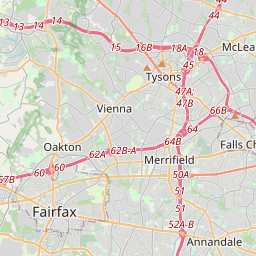Inscription
Much survives of Fort Ethan Allen, a critical part of the Defenses of Washington, D.C., during the Civil War.
Fort Ethan Allen defended the southern approaches to Chain Bridge, one of the three Potomac River crossings that Confederate troops could have used to invade Washington. Unlike many Civil War sites, Fort Ethan Allen saw no major battles—but that does not diminish its value. The fort's very existence deterred an assault. The Confederate Army never launched an attack that captured the nation's capital.
"The possession of Chain Bridge communication with the opposite shore of the Potomac . . . was essential to the operation of our forces in Virginia and to the prestige of our arms."
—General John G. Barnard, U.S. Army, 1871
(Captions)
Chain Bridge from Washington, D.C., 1865
Military control of the bridge began in 1861 so that Union soldiers could maintain communications and troop movements across the Potomac between Washington and Union-held territory in Virginia.
Abraham Lincoln
In late May 1861, President Lincoln approved his generals' plans to build fortifications in strategic areas of northern Virginia across the Potomac River from the nation's capital. Lincoln inspected Fort Ethan Allen during its construction in September
1861.
Defenses of Washington
Washington, D.C., was the most heavily fortified city in the Union during the Civil War. By the war's end, 164 forts and batteries formed a 37-mile defensive parameter.
Fort Ethan Allen
The fort was strategically located on high ground between Pimmit Run and Gulf Branch, a natural ravine. Surrounding land was cleared of trees to open sight lines in all directions.
Fort Marcy
Fort Marcy also protected Chain Bridge, while it and Fort Ethan Allen protected each other. Ditches and rifle pits connected the two forts and their fields overlapped.
Chain Bridge
The strategic importance of Chain Bridge was reflected in the degree of protection it received on both sides of the Potomac.
Fort Ethan Allen defended the southern approaches to Chain Bridge, one of the three Potomac River crossings that Confederate troops could have used to invade Washington. Unlike many Civil War sites, Fort Ethan Allen saw no major battles—but that does not diminish its value. The fort's very existence deterred an assault. The Confederate Army never launched an attack that captured the nation's capital.
"The possession of Chain Bridge communication with the opposite shore of the Potomac . . . was essential to the operation of our forces in Virginia and to the prestige of our arms."
—General John G. Barnard, U.S. Army, 1871
(Captions)
Chain Bridge from Washington, D.C., 1865
Military control of the bridge began in 1861 so that Union soldiers could maintain communications and troop movements across the Potomac between Washington and Union-held territory in Virginia.
Abraham Lincoln
In late May 1861, President Lincoln approved his generals' plans to build fortifications in strategic areas of northern Virginia across the Potomac River from the nation's capital. Lincoln inspected Fort Ethan Allen during its construction in September
1861.
Defenses of Washington
Washington, D.C., was the most heavily fortified city in the Union during the Civil War. By the war's end, 164 forts and batteries formed a 37-mile defensive parameter.
Fort Ethan Allen
The fort was strategically located on high ground between Pimmit Run and Gulf Branch, a natural ravine. Surrounding land was cleared of trees to open sight lines in all directions.
Fort Marcy
Fort Marcy also protected Chain Bridge, while it and Fort Ethan Allen protected each other. Ditches and rifle pits connected the two forts and their fields overlapped.
Chain Bridge
The strategic importance of Chain Bridge was reflected in the degree of protection it received on both sides of the Potomac.
Details
| HM Number | HM2E09 |
|---|---|
| Tags | |
| Marker Condition | No reports yet |
| Date Added | Saturday, February 2nd, 2019 at 4:03am PST -08:00 |
Pictures
Locationbig map












| UTM (WGS84 Datum) | 18S E 315839 N 4310449 |
|---|---|
| Decimal Degrees | 38.92365000, -77.12438333 |
| Degrees and Decimal Minutes | N 38° 55.419', W 77° 7.463' |
| Degrees, Minutes and Seconds | 38° 55' 25.14" N, 77° 7' 27.78" W |
| Driving Directions | Google Maps |
| Area Code(s) | 202, 703 |
| Which side of the road? | Marker is on the right when traveling West |
| Closest Postal Address | At or near 3829 N Stafford St, Arlington VA 22207, US |
| Alternative Maps | Google Maps, MapQuest, Bing Maps, Yahoo Maps, MSR Maps, OpenCycleMap, MyTopo Maps, OpenStreetMap |
Is this marker missing? Are the coordinates wrong? Do you have additional information that you would like to share with us? If so, check in.
Nearby Markersshow on map
Show me all markers in: Arlington, VA | Arlington County | 22207 | Virginia | United States of America
Maintenance Issues
- Is this marker part of a series?
- What historical period does the marker represent?
- What historical place does the marker represent?
- What type of marker is it?
- What class is the marker?
- What style is the marker?
- Does the marker have a number?
- What year was the marker erected?
- Who or what organization placed the marker?
- This marker needs at least one picture.
- Can this marker be seen from the road?
- Is the marker in the median?

Comments 0 comments